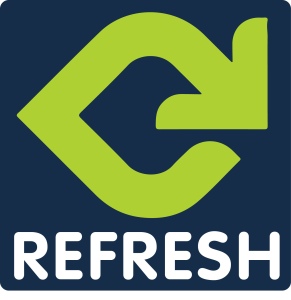REFRESH — Transporting Spent Nuclear Fuel: How Do We Know It’s Safe?
Mark Lombard
Director, Division of Spent Fuel Storage and Transportation
 As
the country wrestles with how to manage the highly radioactive fuel
left over from generating nuclear power, one question often comes up:
“how do we know we can transport it safely from reactor sites to other
locations for storage, testing or disposal.” For one thing, we
periodically assess the risks. For another, spent fuel shipments are
strictly regulated and have not released any radioactive materials since
they began more than 30 years ago.
As
the country wrestles with how to manage the highly radioactive fuel
left over from generating nuclear power, one question often comes up:
“how do we know we can transport it safely from reactor sites to other
locations for storage, testing or disposal.” For one thing, we
periodically assess the risks. For another, spent fuel shipments are
strictly regulated and have not released any radioactive materials since
they began more than 30 years ago.Our most recent risk assessment, published in 2014, confirmed that NRC regulations for spent fuel transport are adequate to ensure safety of the public and the environment. As more data become available and computer modeling improves, these studies allow the NRC to better understand the risks.
Both the NRC and the U.S. Department of Transportation oversee radioactive material transport. DOT regulates shippers, vehicle safety, routing and emergency response. The NRC certifies shipping containers for the more hazardous radioactive materials, including spent fuel.
To be certified, a container must provide shielding, dissipate heat and prevent a nuclear chain reaction. It must also prevent the loss of radioactive contents under both normal and accident conditions. Containers must be able to survive a sequence of tests meant to envelope the forces in a severe accident. These tests include a 30-foot drop onto an “unyielding” surface (one that does not give, so the cask absorbs all the force) followed by a 1,475-degree Fahrenheit fire that engulfs the package for 30 minutes.
The 2014 Spent Fuel Transportation Risk Assessment modeled the radiation doses people might receive if spent fuel is shipped from reactors to a central facility. The study found:
- Doses along the route would be less than 1/1000 the amount of radiation people receive from background sources each year
- There is a 1 in 1 billion chance that radioactive material would be released in an accident
- If an accident did release radioactive material, the dose to the most affected individual would not cause immediate harm
The 2014 study builds on earlier studies of transportation risks. It uses real-world data and equipment in place of generic designs and conservative assumptions. The first study, done in 1977, allowed the NRC to say that its transport regulations adequately protect public health and safety. Other studies done in 1987 and 2000 found the risks were even smaller than the 1977 study predicted. Together with analyses we perform on major transportation accidents, these studies give the NRC confidence in the safety of spent fuel shipments.
For more information on how the NRC regulates spent fuel transportation, click on our backgrounder.
REFRESH is an occasional series where we revisit previous posts. This originally ran in September 2013

No comments:
Post a Comment